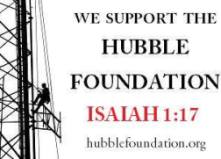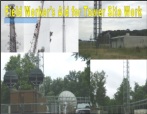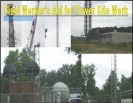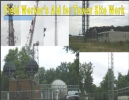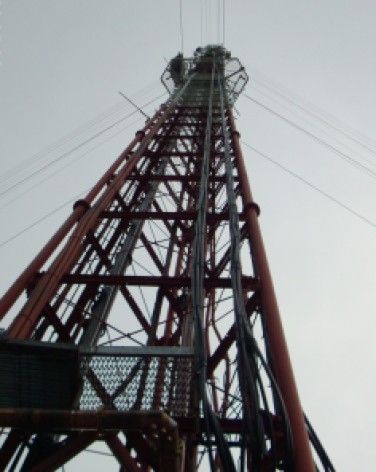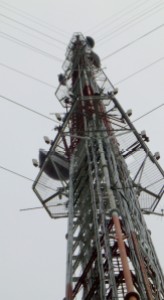Podcast: Play in new window | Download | Embed
Subscribe: Apple Podcasts | RSS
Deadly Lies:
I heard about this firsthand when someone came looking for information. Wireless Estimator wrote about it here. What happened was someone called several people stating that a climber fell and died. This type of thing worries so many people. We have enough problems in this industry without people making up stories about death. I don’t know the whole story, but I will tell you that someone thought it would be funny to make up a story that a climber had died. To call people and then put it on Facebook that a fellow climber, a towerdog, a brother in climbing, had fallen. This happened about 2 weeks ago.
Listen to the podcast for more information! Search on iTunes for Wade4wireless and write a review now!
OK, to start with I think that people out there need to understand that many people really care about the industry, so when someone says something like this because they think it’s funny, they cause sleepless nights. They cause OSHA and climbing groups to research the facts. They waste a lot of time of many people because of some sick joke, a sick prank. I get calls all the time of past and present problems, some true and some made up. I research issues and I understand that there are so many angry people in this industry that want to make it look worse that it already does. With so many people working around the clock to make this industry a better place, it’s a shame that there are a few people giving it a bad name.
If you know one of these people, deal with them accordingly. They really are not an asset to the industry nor to anything in the wireless profession. They are a disappointment to not only to the wireless industry, but to themselves as well. I like to think that we can all learn from this. Unfortunately, next time something terrible happens we will need to say, prove it because of people like this.
All I can do is complain about and, forget about it, then move on and be thankful that the FCC and DOL are working together to understand the industry and make the workplace safer than it has ever been in the USA.
For the person that started this rumor, congratulations, you made some people worry and feel like crap because they genuinely care about other people and the industry. As you sit at home this weekend and laugh at the pain you caused, at the company you slandered, and at the profession you maligned you can be proud that you were able to sink to a new low by setting the standard for decency even lower.
For everyone else – Do me a favor, don’t be despicable, be decent and make the world a better place by helping each other out. Helping each other takes time and effort but it’s worth it. There are so many good people in this industry. So many people who do good things for as many other people as they can reach. I am thankful for that. I worked and talked to many of those people. So let’s work together to make this a better work place. We all make mistakes, so let’s forgive, get over it, and push forward.
In my opinion, the wireless industry is a great work place. I get frustrated at times and like any business you have scum buckets. Then you meet people who really care and want to make their work shine, people that really care about each other, then I have hope that wireless is the best industry to work in ever.
Feedback:
I got quite a bit of feedback on the post, “My Company won’t Pay Me, Now What?” so here is some of it.
Comment: The only comment I have is to NEVER spend your own money for supplies. You are a naive sucker if you do. Plus, it will save you all the trouble of doing what this gentleman had to do. These companies for the most part will take advantage of you if you give them the opportunity. If they want a project finished badly enough, they will get the supplies to you.
My response: Good advice to follow, I learned the hard way, much of that depends on who you work for.
Comment: I’m very happy that you ultimately got paid – sorry that you had to spend even five minutes fighting for what was yours to begin with.
I complain on one axiom you mentioned:
“they thought they would get away with because this company did business by not paying unless they absolutely had to … “
This should have been worked out unambiguously, immediately before signing on as an employee or contractor. I’m not chastising you – I’ve been burnt before – became wiser afterwards, immediately. I got burned once – never again. I recouped my stolen loot – and will die with the secret as to how I did it. I surely wish all of you who trust people [companies] – only because you’re trustworthy yourselves, will learn as quickly that snake oil people are embedded even in Fortune 500 Companies.
My response: It actually was worked out in my work contract, that is why I got paid, and thank you for understanding. You are correct, I am wiser now and I pay attention to how the company does business, that matters. I research a company and the people who are in management before I work there. I worked for a company that didn’t get paid and they went to court and won, yay, however they still didn’t get paid. Just because you have it in writing doesn’t mean they will pay you, it only means you won and that you may have to go back to court again. I have seen some companies spend more time working not to pay people than working to make a profit.
Comment: Wade,
I’m glad you (a) sought out an attorney to find out about your rights, and (b) the attorney you spoke with gave you sound counsel.
Sadly what you experienced is more common than most people realize, and many just give up. I’m very happy that you stood your ground and fought for what you had earned. Jonathan Kramer, Esq. Telecom Law FIrm, P.C.
My response: Thank you sir!
Comment: Worked for them a few years back. They decided to close the Dallas office without warning while my crew was on the road. We were left high and dry, and told we could just go home. The XXXXXX brothers have a history. Glad you could fight for yours.
My response: Thank you!
Comment: Hi
Good work you have done!
The industry is full of bad moral.
I have worked as self-employed in Denmark for many years.
At several occasions the customer will not pay.
It is much too easy. They can do it with no risk.
The customer get a free credit and probably a discount, due to a compromise. I have always made a legal case against these companies.
The law should be changed in a way, so that the companies risk a penalty if they don’t pay what they owe you!
My response: Thank you!
OK, that’s it for this week and there is much more in the podcast so listen there for more information.
Verizon 4G LET Upgrade using a helicopter
Soon I will release my training for the SOW and more, to build your library of basic knowledge so you can advance in your job and the industry! So feel free to buy one of my books and maybe they will help you learn something that you didn’t know or teach someone who needs to know.
Kindle:
PDF books so you can buy with PayPal:
PDF books you can pay with Credit Card:




